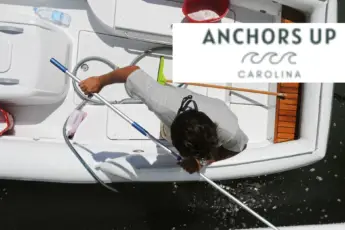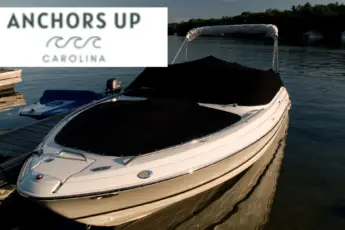One of the worst scenarios while boating is coming in contact with the bottom of the seafloor, either with the hull, motor, or both. As a captain, I have navigated treacherous waters lined with reefs and sandbars. Despite my experience, I hit bottom one or two times. After running aground, it is important to know how to assess and repair damage to the vessel.
Most Common Reasons Recreational Boaters Run Aground
Without question, there are a multitude of reasons why recreational boaters run aground. It is best to avoid accidental groundings because of not only damage to the vessel but, more importantly, the risk of injury. Here is why boaters run aground.
Fail To Monitor Marine Electronics
One of the primary reasons that boat owners run aground is because they fail to monitor the GPS unit.
With today’s technology, it has become easier to navigate. For this reason, you will want to ensure that you’re remaining outside of shallow water areas when navigating based on GPS positioning.
Improperly Read The Water
One important skill set that should be learned is how to read the water. Reading water is done in a couple of ways: the first is the color, and the second is the movement at the surface.
As a captain, I needed to read the water frequently when navigating through reefs. Learn how to read the water to reduce the chances of grounding the boat.
Forgetting To Review Charts Before Boating
Each time I would head out to a new area while working as a captain, I would review charts. As a recreational boater, it is important to understand where shallow waters lie. Knowing in advance areas to avoid will help prevent you from running aground.
How To Assess A Boat After Running Aground
When the unfortunate happens, it is important to know how to assess the damage of an accidental grounding. Here is how to properly assess a boat.
Ensure That You’re Not Taking On Water
Besides everyone’s safety, the first thing to consider is ensuring that the boat is not sinking. A vessel that has struck a hard object is likely to puncture the hull. In the event you’re sinking, you’re likely going to need to call for help.
Have The Boat Hauled Out Of The Water
In the situation where you store your boat on a trailer, hauling it out won’t be an issue. However, if you store the vessel in the water, you’re going to want to have it pulled.
Once the boat is removed from the water, take a close look at the hull, the running gear, or the outboard motor or motors.
In some cases, you may only see minimal damage to the bottom paint or the hull, such as scratching. Alternatively, the damage may be severe, and gelcoat work will be required.
Once the hull is inspected, focus on the propeller, lower unit, or running gear. I hit a hard floating object in a 32’’Cabo and bent the tip of each propeller blade. However, I only knew this because I had the boat hauled out.
Make A Plan Of Action For Repair
Undoubtedly, the severity of damage will vary based on the level of impact and the type of bottom the boat made contact with.
While the boat is out of the water, schedule repair work to be completed either at the marina or a service center.
When planning the service work, make sure to clearly define all areas of concern. For example, a lower unit may not visibly show signs of damage, but a hard strike can lead to issues internally.
Furthermore, a marine service center may overlook areas of the hull that require touching up. I suggest creating a punch list to follow. However, take it a step further and walk through all areas of concern.
Remember, you don’t want to be delayed in getting your boat back into the water. This is especially the case if the season is limited.
Lastly, once the work is done, make sure to inspect the quality. Don’t hand over payment until you are fully satisfied.
Assess And Repair Your Boat After Running Aground
I’ll be the first to admit that running aground does not leave you with an easy feeling. Fortunately, the damage has been minimal in my experiences, but I have witnessed the complete destruction of the vessels. Remember to take all necessary steps to avoid accidental groundings by studying charts, reading water, and monitoring onboard navigation equipment. Trust me, it will save you not only money but, more importantly, time.







